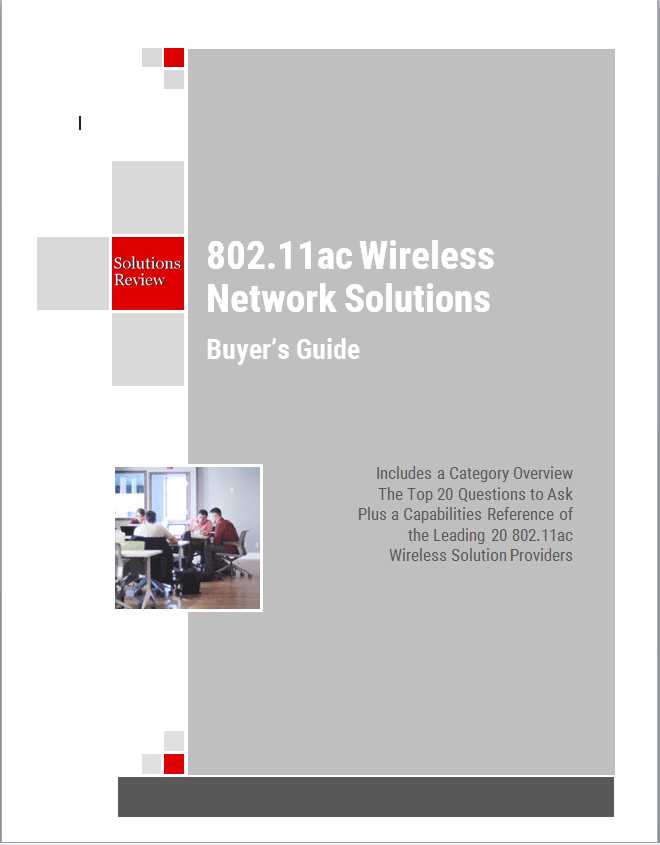All About Bandwidth: Caps, Throttling and How to Get the Most of It


There is nothing more frustrating or confusing in the wireless networking world when you get a brand new, top of the line, 802.11ac router that is capable of speeds up to 1 gigabit per second with a 5GHz band, only to have it perform at speeds half of that on a good day. Why advertise what the router can do, if it’s not actually going to perform that way in an everyday setting? This is especially problematic in the enterprise as businesses have evolved to depend heavily on their network connection. In 2016, we’ve come to expect that wireless speeds should be much quicker than we ever need them to be but the reality is, Wi-Fi technology is one of the slowest developing technologies. While there are a few factors that contribute to this notion, the biggest and most obvious one is bandwidth.
Bandwidth is the bit-rate available to be used by the devices accessing the network. With each new IEEE standard released, the band width gets bigger and bigger allowing for more traffic pass through and exchange information without being held up and slowed down.
If you think of the bandwidth as a school hallway and the radio communication signal traffic going back and forth between the router and the devices are the students. There are certain times of the day when there are more people using the hallway to move around the building. When the bell rings, and students start moving on to their next class, if the hallway is too narrow, people get stuck and can’t get to their destination in a timely manner; even though the actual time it takes to walk to the next room is short. When everyone is trying to do the same thing in all different directions and patterns, it can become a gridlocked nightmare. If a student was to navigate around the school before or after hours, they can walk freely to their destination; they may even be able to jog there, showing up faster than expected.
Too many people are tying to do the same thing at the same time and there just isn’t enough room. Since there’s isn’t a practical way to limit wireless access to more evenly distribute it throughout the day, the only way to stop these traffic jams is to widen the hallway. For example the 802.11ac standard more than doubles the bandwidth of 802.11n allowing more room for wireless traffic to pass.
Construction is complete and the school has a brand new hallway that’s twice as wide as the one they had before. This seems great, but school hallways are never organized and students don’t always behave the way they are supposed to. People are checking their lockers and circling up to chat with friends. Someone spilled water on the floor and that area is roped off; a fight breaks out and everyone needs to circle up and see what’s going on. The school has become bigger so more students are coming in, and taking up space in the hallway as well. These events cause slower traffic and while not all of them are intentional, these delays are still frustrating; what was the point of widening the hallway if there are still going to be hangups in traffic speed?
We see the same kinds of hangups in bandwidth; no one is fighting in the hallways but there are things blocking the traffic from utilizing the full capacity of the bandwidth. For one thing, there’s just more traffic due to the high adoption of mobile devices in the enterprise and when people realize that the Wi-Fi is working better, they are more likely to connect their devices rather than using mobile data.
While data caps and throttling aren’t as harsh of a reality for enterprises and SMBs with business class internet as it is for home consumers, not getting the speeds you are paying for regardless of the reason is an unacceptable reality. There are a few things you can do to be sure that you’re getting the best possible speed you can:
Make sure that your access points are in places where they can be fully optimized, not just where they fit. It’s a good idea to use site survey tools to map out your network to be sure you’re getting the most out of the space and APs you have.
Make sure the routers are operating only on the standards you will be using. If all of your employees can use 802.11ac, then there isn’t a reason why any other standard has to be enabled.
Make use of repeaters to “widen the hallway” and give you a wider, less crowded signal in places where the signal tends to be weaker.
See which access points will work for your small business or enterprise in our updated 2016 802.11ac Wireless Networks Buyer’s Guide.




















